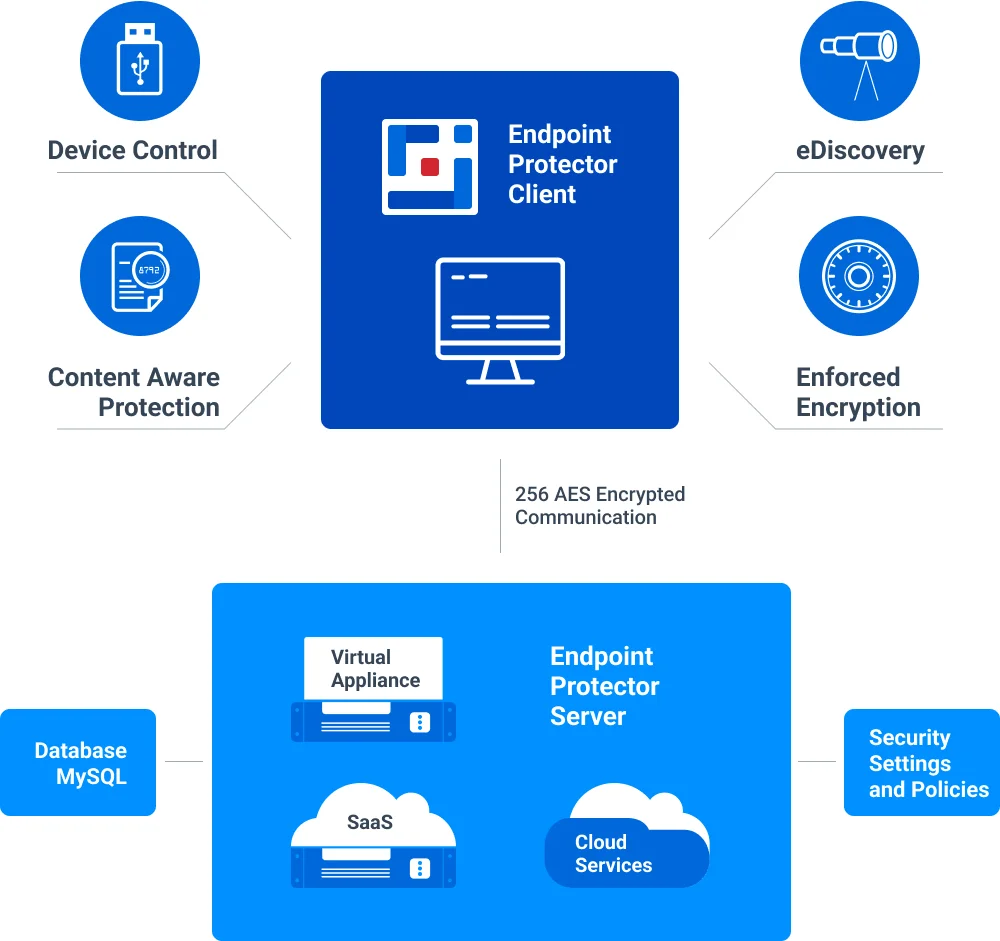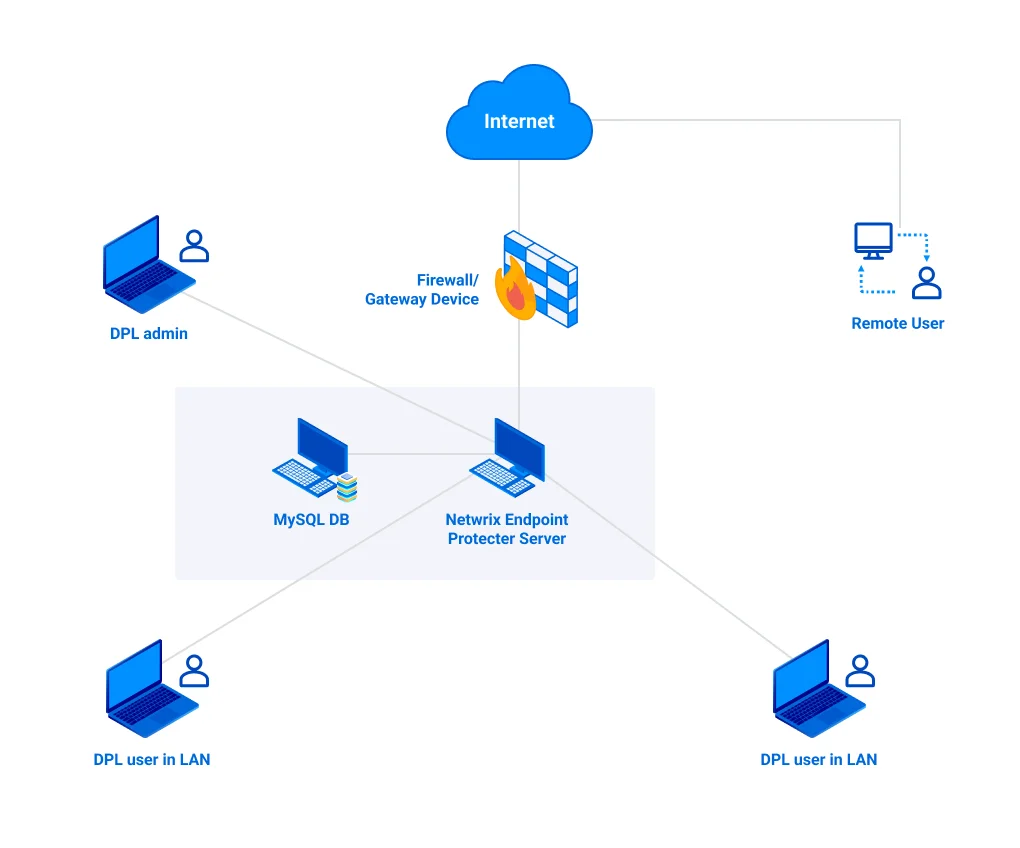Main Components
Endpoint Protector is designed around several physical entities:
- Computers – The Windows, Mac, and Linux workstations that have the Endpoint Protector Client installed.
- Devices – The devices that are currently supported by Endpoint Protector (USB devices, digital photo cameras, USB memory cards, etc).
- Users – The user who will be handling the devices and the computers.
The Server side of Endpoint Protector has different parts working close together:
- Endpoint Protector Hardware or Virtual Appliance – containing Operating System, Database, etc.
- Web Service – communicating with the Endpoint Protector Clients and storing the information received from them.
- Endpoint Protector User Interface – managing the existing devices, computers, users, groups, and their behavior in the entire system.
The Client-side of Endpoint Protector has two different components:
- Endpoint Protector Client – enforcing the rights and settings received from the Server on Windows, Mac, and Linux computers; it also automatically deploys Enforced Encryption on the USB storage devices.
- Enforced Encryption Client – enforcing 256 AES encryption on USB storage devices as specified from the Server; it is a stand-alone application compatible with Windows and Mac computers.

Architecture Overview
The diagram below illustrates the network architecture for the Endpoint Protector system. This setup enables comprehensive Data Loss Prevention (DLP) across both local and remote users, securing sensitive information and ensuring compliance with security policies.

Key Components and Data Flow
Endpoint Protector Server
This server is the core of Endpoint Protector, enforcing security policies and monitoring data flows across the organization. It communicates with all endpoints to ensure compliance with data protection rules and logs activity for auditing purposes.
MySQL Database
The Endpoint Protector server is integrated with a MySQL database that stores configuration data, user activity logs, and incident reports. This allows for centralized data management, enabling efficient policy enforcement and detailed reporting.
Firewall/Gateway Device
Acting as a security barrier, the firewall/gateway protects the network from external threats and manages secure connections for remote users. It ensures that only authorized traffic reaches the Endpoint Protector Server, safeguarding internal resources.
DLP Admin
The Data Loss Prevention (DLP) Admin manages the entire Endpoint Protector infrastructure. They configure policies, monitor endpoint activity, and address potential data breaches. The admin uses the server’s interface to adjust security rules and respond to incidents as they occur.
DLP Users (LAN and Remote):
- LAN Users – These internal users are connected to the organization’s Local Area Network (LAN), and their devices are monitored by the Endpoint Protector server to prevent unauthorized data transfers.
- Remote Users – Remote employees access the network through secure channels via the firewall/gateway. Their activities are also monitored by Endpoint Protector to ensure consistent enforcement of policies.